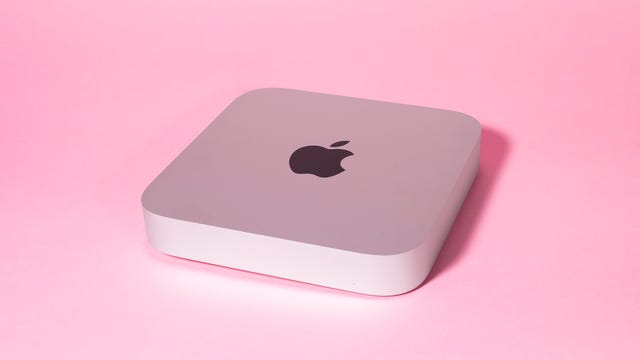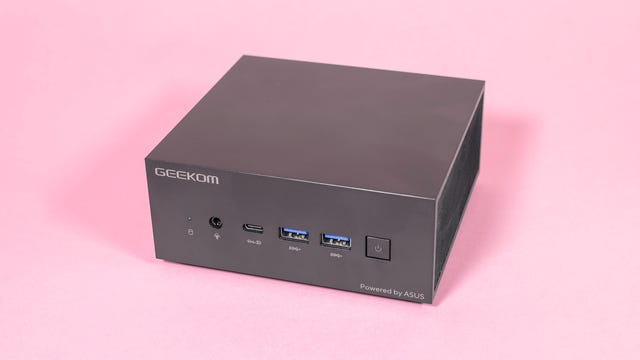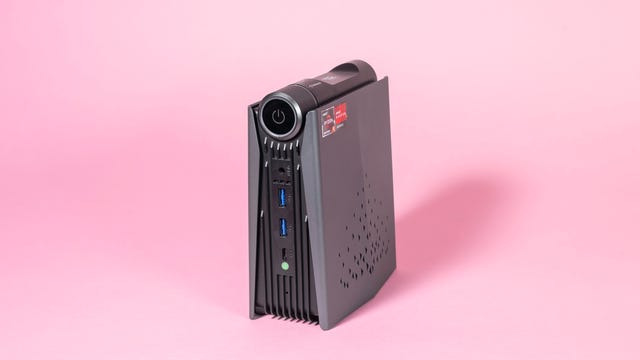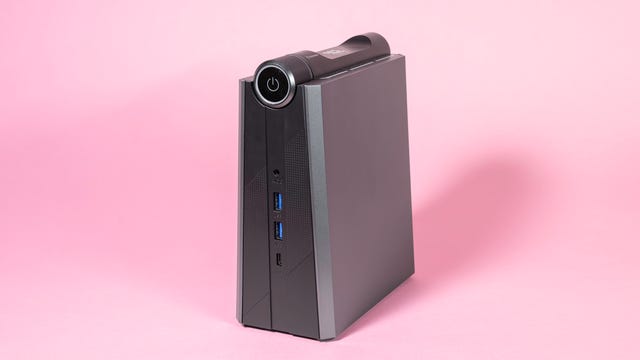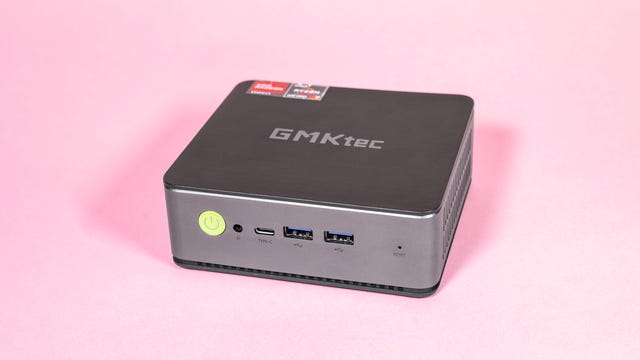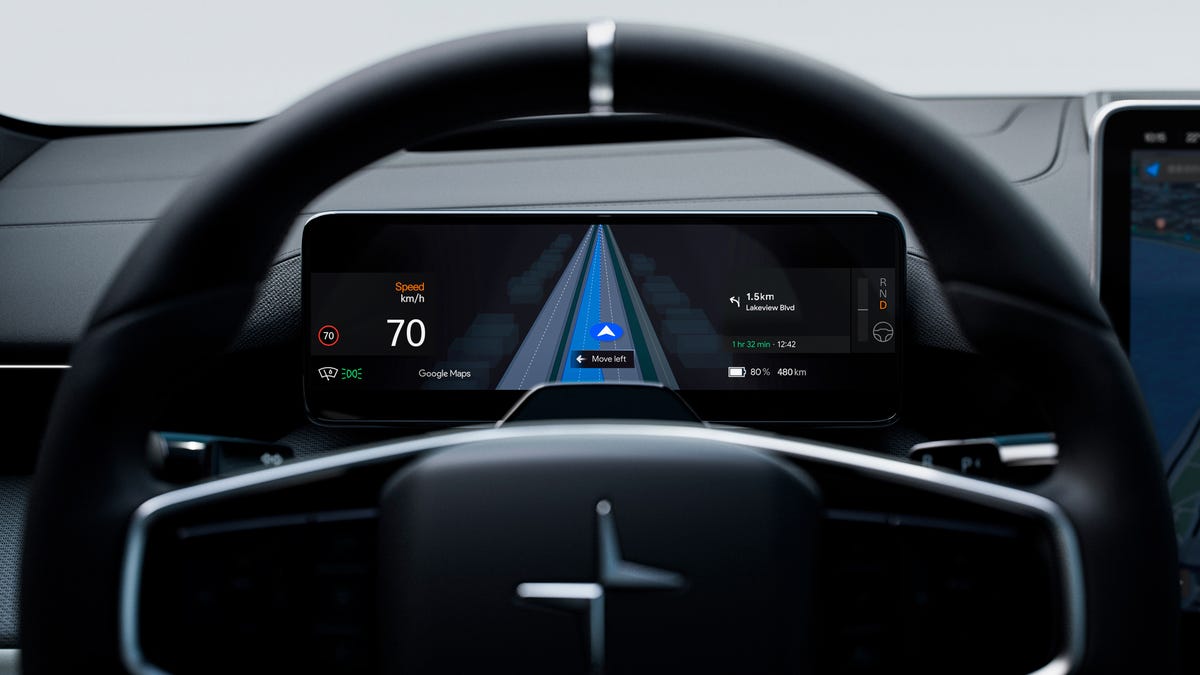Technologies
Small but Mighty: 5 Powerful Mini PCs for Your Needs
These tiny desktops offer great performance and low power usage while taking up very little space.
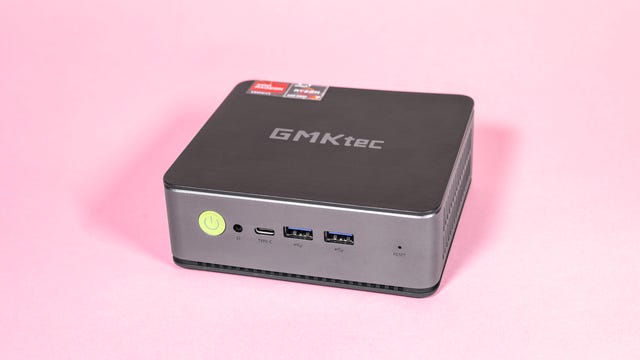
Massive high-performance desktops are still common — especially for gaming — but as component sizes shrink, so do the computers that contain them. Mini desktop PCs like the ones in this list offer performance enough for most home office tasks, and some allow for more demanding gaming and video production, yet most are small enough to actually fit almost anywhere.
That makes the best mini PCs compelling options for those of us living in smaller apartments or working from home without a dedicated office space, or for students sharing rooms where space is at a premium. Instead of you having to find room for a big tower, these tiny things can sit unnoticed on your desk, hidden on a nearby bookshelf or even mounted behind your monitor entirely out of view.
They also use significantly less power, with most drawing around 30 to 40 watts while you’re web browsing (Apple’s Mac Mini draws only about 8 watts). That’s a lot less than the 250-watt drain you’ll find with a typical desktop PC.
The smaller size does mean most models don’t have the raw power expected from full-sized desktops, but all models tested here are more than capable of handling everyday office tasks, web browsing, 4K video playback and photo editing in professional apps like Adobe Lightroom. The more high-spec models are even able to smoothly edit 4K video in Adobe Premiere or handle demanding games like Elden Ring.
What is the best mini PC overall?
Apple’s Mac Mini with M2 Pro chip topped our tests, managing to be the most powerful option, yet it also used the least amount of energy in everyday use. It’s something of a tiny powerhouse, casually munching through our 4K video editing project and exporting the final file in less than half the time of any others we tested. But it’s also the most expensive, at more than double the price of others on this list. So though it’s the best from a performance perspective, it might not be the best for your budget.
The Geekom AS6 offers a better balance of performance and value, with enough performance to handle photo editing, light gaming and casual video editing but at a much more accessible price than the Mac Mini.
If you’re simply after a machine to handle your daily home office duties, web browsing or to act as a media center to hook up to your TV, the AceMagician delivered decent results in our tests, and it’s the cheapest model on this list.
Best mini PCs 2023
Specs as tested:
- CPU: Apple M2 Pro
- RAM: 16GB DDR5
- SSD: 1TB
Apple’s Mac Mini is the most expensive model on this list by far, so you’d expect it to offer performance that outshines other tiny desktops — and it really does. Its benchmark results far exceeded the Windows-based models, it coped with 4K video editing with no issues whatsoever and exported my test project from Adobe Premiere in only seven minutes, less than half the time of any of the other models.
Though gaming still isn’t much of a thing on the Mac (Elden Ring wasn’t installable on Steam), it easily handled my sessions of The Elder Scrolls Online on high settings.
But the most impressive aspect for me is the power draw. During web browsing, the Mac Mini used only around 8 watts of power, and it averaged around 40 watts when exporting video. That’s a significant amount less than every PC on this list, which will make the Mac Mini a more economical choice over time.
Its one-piece aluminum body is attractive, too, though it’s frustrating that all the ports are hidden around the back, with no quick access to any on the front. It’s also not user-upgradable. Still, those are arguably more-minor concerns given the superb performance and low power usage the Mac Mini offers.
Specs as tested:
- CPU: AMD Ryzen 9 6900HX
- RAM: 32GB DDR5
- SSD: 1TB
Geekom’s AS6 is the least visually appealing of the models we tested, being just a dull, plain black box. But that makes it an ideal mini PC for hiding away, perhaps on a nearby bookshelf or even mounting behind your monitor, tucked out of sight entirely. It’s upgradable, but that requires unscrewing and removing the outer casing, rather than just simply popping off a cover like with the AMR5.
It might be small, but it packs some decent specs, producing solid results on our benchmark tests and allowing Elden Ring to run smoothly enough at medium graphics settings. Harry Potter: Hogwarts Mystery played fine at recommended low settings too, and while I got a warning about incompatible hardware when I changed the settings to medium, the game still played well enough, at least for more casual players who aren’t obsessing over frame rates and draw distances.
Editing 4K video in Adobe Premiere was smooth, and the AS6 exported my test project in a little over 16 minutes — a long way behind the Mac Mini, but the fastest of all the Windows-based PCs on this list.
Its power draw was around 60 watts while web browsing, which is higher than most others on this list, and went up to around 75 watts during more intense tasks like video exporting.
The AS6 is one of the more expensive options on this list, but that extra cash does result in higher performance.
Specs as tested:
- CPU: AMD Ryzen 5 5600U
- RAM: 16GB
- SSD: 512GB
With its upright form factor and tiny footprint, the AMR5 sits very comfortably on a small, home office desk. Its two USB and one USB-C port on the front make it easy to plug in devices, while the magnetic side panel makes accessing internal components a breeze.
Its older AMD Ryzen 5 chip allows for swift general office and web browsing tasks and it runs lightweight games like Dredge without any issues. It scored low on our benchmark tests, however, and more demanding games like Elden Ring were sluggish and choppy, even on low settings. Though it handled image editing in Lightroom CC fine, 4K video editing in Adobe Premiere wasn’t as smooth, but it exported my test project faster than others on this list.
It typically drew around 40 watts of power during web browsing and general use, going up to about 50 watts during gaming and video exporting.
It isn’t a high-performance machine. It’s best suited for those of you who need a small machine for home office and web browsing tasks.
Specs as tested:
- CPU: AMD Ryzen 6900HX
- RAM: 32GB
- SSD: 512GB
The bigger brother to the AMR5, the AM08 Pro comes with a slightly larger body size and somewhat beefed-up internal specs that include a higher-powered AMD chip. It’s little surprise then that it performed better on our benchmark tests and turned its hand to more-demanding tasks too. Elden Ring played well enough for more casual gamers on low settings, so those of you looking to enjoy lighter titles on Steam will be perfectly well catered for here.
It also handled 4K video editing in Premiere, allowing me to scrub through the timeline with little delay and export the project in a reasonable 25 minutes. Photo editing in Lightroom CC was fine as well. It typically drew around 30 to 40 watts of power during web browsing and up to 70 watts during more demanding gaming and video exporting.
While the smaller AMR5 is suited only for lightweight home office tasks, the AM08 Pro is a better option for students wanting a more well-rounded PC for tackling assignments during the day and enjoying some games in the evening.
Specs as tested:
- CPU: AMD Ryzen 76800H
- RAM: 16GB DDR5
- SSD: 1TB SSD
Like the Geekom AS6, the Nucbox K1 is essentially just a small square that’s hardly exciting to look at. A silver-and-black color scheme adds a bit of interest though, and the plastic lid easily pops off to allow access to the internal components — no screwdriver needed. As the smallest of all models on this list, it’s exceptionally unobtrusive on your desk or mounted behind your monitor.
It generally offered low performance on all our tests, from CPU benchmarks to gaming and video editing. It didn’t handle Elden Ring on any quality settings, but casual gamers wanting light titles like Dredge or Unpacking will find it sufficient. It edited images in Adobe Lightroom without much hassle, but it noticeably struggled with my 4K project in Premiere and exported the video in a little over 35 minutes — the slowest of all models on this list.
Its power draw was around 45 watts during web browsing and around 60 watts during video exporting. Thankfully, its price means its humble performance for gaming or multimedia production is perfectly acceptable — it’s less than half the price of the Mac Mini, after all. Instead, this is a PC aimed more at office tasks, web browsing or even as a media hub to connect to your TV.
Time taken to export 4K video from Premiere
Average power usage during web browsing
How we test mini PCs
All items on this list have been tested by us, with our own fair hands. All manufacturer’s claims were put to the test to see if they lived up to their promise.
Each model has undergone a suite of benchmark tests including multiple runs of Geekbench 6 and 3DMark Wild Life Extreme. We tested gaming using demanding titles like Elden Ring (via Steam) at various quality settings as well as less demanding games like Dredge. We tested the PCs while web browsing, playing YouTube videos and working in Google Docs.
We edited high-resolution raw images in Adobe Lightroom CC and edited 4K videos in Premiere Pro. We noted the general responsiveness of each interface, and we timed how long it took to export our test video project in 4K.
We also plugged each model in to the power outlet via a power meter, noting how much power each model used during different tasks, allowing us to comment on the efficiency of each machine.
Technologies
Here’s How Much Tesla’s New Affordable Electric Cars Cost
What do you get with the stripped-down Model Y and Model 3? A lower price, for starters.
Technologies
This New Car Feature Uses AI to Keep You From Missing Your Exit
Google Maps’ live lane guidance is being integrated into Polestar’s head-up display.
Technologies
Hurry to Nab the Baseus Bowie MH1 Headphones for Over Half Off With This Early Black Friday Deal
This deal drops the price of this premium pair to just $47, but this discount ends soon.
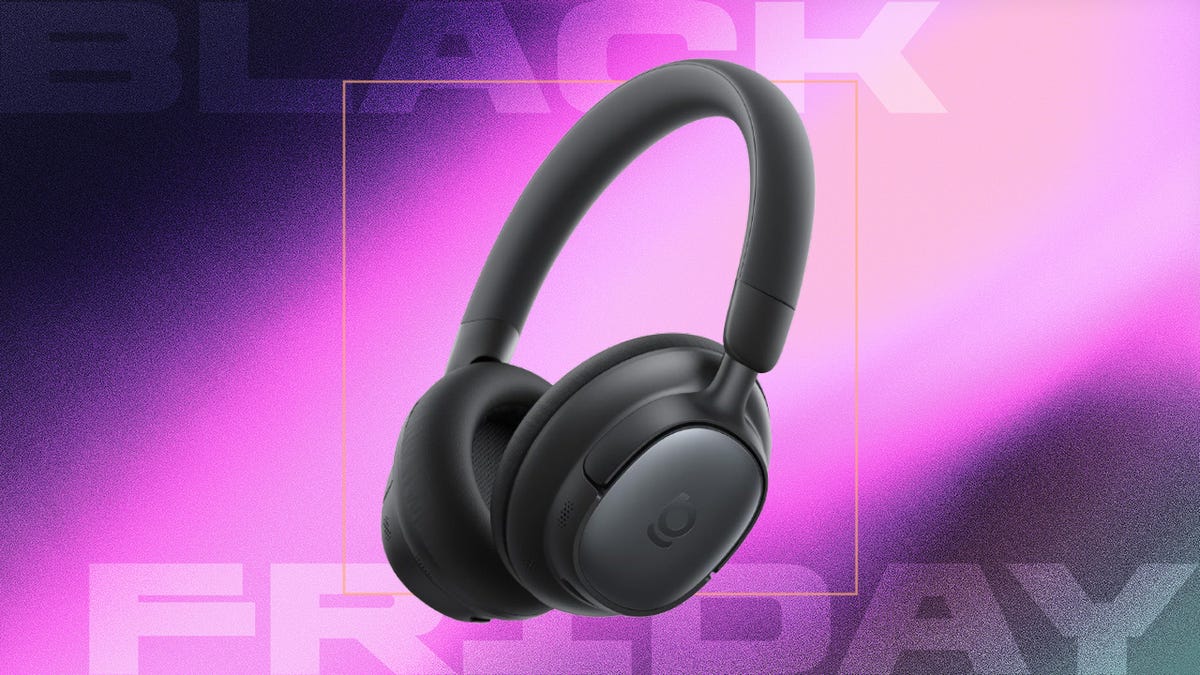
High-quality noise-canceling headphones can cost a pretty penny, especially if you are after adaptive ANC, all-day comfort, and a reliable battery life. Most options with all these features sit well over $100, but we just found a way to score a premium pair for less than $50.
Amazon has a solid early Black Friday deal on the Baseus Bowie MH1 headphones. You can get them for 20% off right now, which drops the price to $80. But stack that with the $25 on-page coupon and use the promo code 8JWTGEUN at checkout, and you slash another $33 off. That brings the final price down to just $47, which is a steal considering all the features you are going to enjoy.
The headphones come with cloud-soft protein leather earcups with resilient memory foam for cloud-like comfort. The pair is capable of blocking up to 99.8% of noise with –48 dB deep noise cancellation, and it adapts to your surroundings as needed.
Hey, did you know? CNET Deals texts are free, easy and save you money.
The 36mm drivers and full-range LCP diaphragms give you clear, rich sound no matter what you listen to. In addition, with Baseus Immersive Spatial Acoustics, the audio surrounds you for a more natural listening experience. For clearer calls, the headphones also pack 5-mic sound sensors with AI-powered voice enhancement and wind-noise reduction. You won’t have to repeat yourself constantly.
Battery-wise, you get up to 80 hours of playtime with ANC off, and 55 hours with it on. A quick 10-minute top-up can also get you up to an additional 10 hours of playback, which is great for when you’re out and about.
HEADPHONE DEALS OF THE WEEK
-
$200 (save $151)
-
$199 (save $150)
-
$329 (save $100)
-
$328 (save $72)
Why this deal matters
High-end audio gear doesn’t come cheap. This deal takes over 50% off a powerful pair of headphones, making the upgrade easy. It won’t last long, though, so it’s best to snap it up sooner rather than later.
Join Our Daily Deals Text Group!
Get hand-picked deals from CNET shopping experts straight to your phone.
By signing up, you confirm you are 16+ and agree to receive recurring marketing messages at the phone number provided. Consent is not a condition of purchase. Reply STOP to unsubscribe. Msg & data rates may apply. View our Privacy Policy and Terms of Use.
-

 Technologies3 года ago
Technologies3 года agoTech Companies Need to Be Held Accountable for Security, Experts Say
-

 Technologies3 года ago
Technologies3 года agoBest Handheld Game Console in 2023
-

 Technologies3 года ago
Technologies3 года agoTighten Up Your VR Game With the Best Head Straps for Quest 2
-

 Technologies4 года ago
Technologies4 года agoBlack Friday 2021: The best deals on TVs, headphones, kitchenware, and more
-

 Technologies4 года ago
Technologies4 года agoVerum, Wickr and Threema: next generation secured messengers
-

 Technologies4 года ago
Technologies4 года agoGoogle to require vaccinations as Silicon Valley rethinks return-to-office policies
-

 Technologies4 года ago
Technologies4 года agoOlivia Harlan Dekker for Verum Messenger
-

 Technologies4 года ago
Technologies4 года agoiPhone 13 event: How to watch Apple’s big announcement tomorrow

